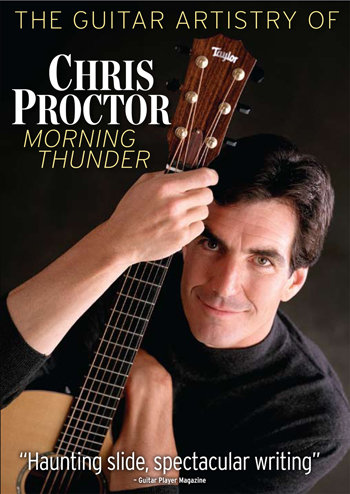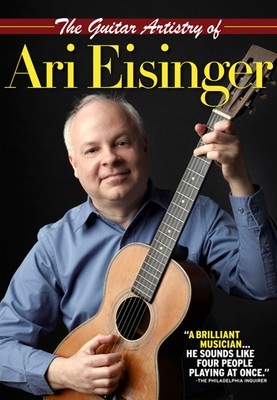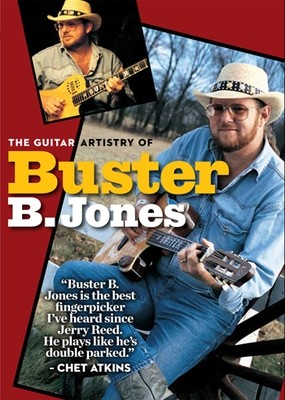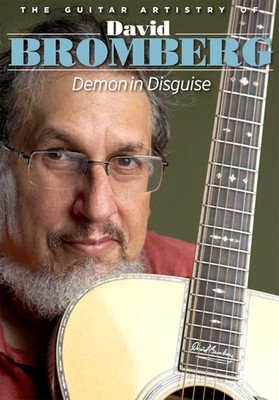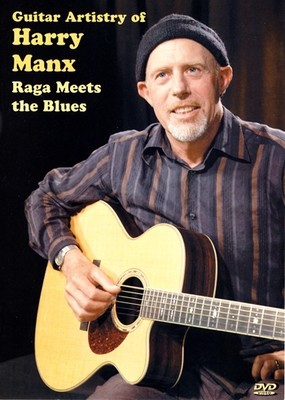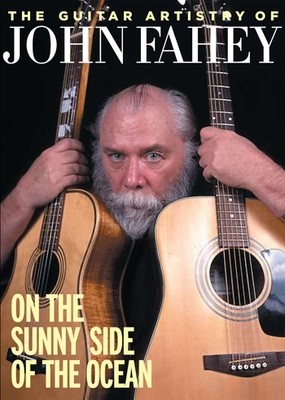
Guitar Artistry of Chris Proctor
“What to call his unique mélange of styles? There’s an aspect of Americana in the echoes of Appalachian and old-timey styles that are apparent in just about every track, but there are also elements of jazz, Celtic folk, and a dash of blues in here somewhere. What Proctor does is create guitar music that reflects the whole heritage of the instrument and still has his own distinct stamp — a tall order, but he’s up to the job.” – All Music Guide/Richard Foss
Chris Proctor falls squarely into the “New World” steel-string guitar style. Beginning with pop and rock music, Chris was soon drawn to the country blues. After exploring that tradition, he studied classical and jazz music, the traditional music of the British Isles, bluegrass and old-time Appalachian music, and, finally, began to investigate the world of the 12-string guitar.
In 1982, Chris won the U.S. National Fingerstyle Guitar Championship and released his first recording, “Runoff.” That recording, and the 8 that followed on the Flying Fish, Rounder, Windham Hill and Sugarhouse labels over the next 27 years, elevated Chris to the top rank in the steel-string world. Chris also wrote articles and books, filmed instructional videos of his transcriptions and techniques, created the guitar workshop program for Taylor Guitars, and designed the Taylor Chris Proctor Signature Model guitar.
Beginning in the year 2000, Chris broadened his original focus on new music to include reinterpreting music of his diverse set of original influences. His performances today are a primer on the acoustic guitar music of the “New World.” They feature original guitar techniques and devices invented and adapted by Chris, and they convey a striking array of tones, textures and moods.
Titles include: Tap Room, Hot Spot, War Games, Ozymandias, Beppe, Ladybug Stomp, Nights in White Satin, Bach to Ireland, Late Again, Interstate, Morning Thunder, The Last Steam Engine Train, Revisiting the Sailor’s Grave, Gecko Drive and Medley:A Scarce O’ Tatties/The Lyndhurst Jig
Running Time: 104 minutes
Review: Watching Taylor fingerstylist and original workshop clinician Chris Proctor in his new DVD Morning Thunder is an enlightening exercise. Proctor has always been an intrepid guitar explorer, and his expansive approach to guitar composition and playing is likely to leave your head percolating with fresh ideas to apply to your own fretboard excursions.
In the DVD, released through Stefan Grossman’s Vestapol Videos (www.guitarvideos.com) as part of Grossman’s “Guitar Artistry” series, Proctor intersperses solo performances, played on his signature model rosewood Grand Concert and maple 12-string, with interview segments as he shares his influences and evolutionary steps as a player. He talks about the merits of composing with one’s head versus one’s hands, explains his approach to arranging and interpreting, and highlights the tools he uses to bring new textures to the acoustic guitar, like partial capos, the EBow, and alternate tunings.
Proctor’s rich aptitude for so many different styles of music, from blues and traditional Celtic to classical and jazz, inform his “New World” approach, which synthesize different idioms in fresh ways, much like fingerstyle mavericks Leo Kottke and John Fahey, both of whom are significant influences. The DVD performances include a sweet version of Kottke’s “Revisiting the Sailor’s Grace” and Fahey’s “The Last Steam Engine Train,” along with Celtic medleys and Proctor’s original compositions, including the new tune “Gecko Drive.”
Though the DVD doesn’t adhere to a traditional-style instructional format, any guitar lover is bound to come away inspired to dig deeper into their own personal musical inspirations and use them to create something fresh. If only we all had Proctor’s spidery reach on the fretboard. – Wood & Steel
Review: Any consideration of the giants of fingerstyle guitar has to include Chris Proctor. He’s been widely known since the early 1980s, when he won the Winfield fingerstyle championship and released his first album, "Runoff." That record revealed Proctor’s musical debt to Leo Kottke, but also introduced listeners to a lighter touch and compositional interests that set Proctor apart from any narrow set of influences. Since then, he’s toured widely, released many albums and instructional videos, and worked as a clinician for Taylor guitars. This DVD presents a good overview of Proctor’s originals as well as highlighting his interpretive powers. He begins with "Tap Room," which, true to its title, incorporates tapping, but also a well-crafted melody and harmonics, played over chords that recall "Hit the Road, Jack." "Hot Spot" and "Ladybug Stomp" are jazzy pieces that integrate bass and treble lines in an effective call-and-response fashion. Proctor uses an EBow in several pieces, as in "Ozymandias," a lyrical piece that’s one of the best originals in the set. On the moody "Interstate," he uses the EBow to best effect, skillfully crossing several strings while using it. Non-originals include the Moody Blues classic, "Nights in White Satin," two Carolan pieces (performed as a medley titled "Bach to Ireland"), Leo Kottke’s "Revisiting the Sailor’s Grace," John Fahey’s "The Last Steam Engine Train," and two Scots jigs, learned from the group Silly Wizard. Throughout, Proctor’s guitars are amplified, a departure from the performances on many other Guitar Artistry DVDs. In interview segments, the guitarist discusses his musical growth, use of alternate tunings, and his Taylor signature guitar. Overall, the DVD is an enjoyable overview of Proctor’s repertoire and thoughts about his music. – Patrick Ragains Minor7th.com
Review: Columbus used ships. Neil Armstrong preferred rockets. And for Chris Proctor - 1982s U.S. National Fingerstyle Champion the chosen means of exploration is an acoustic guitar. With one, he ventures into uncharted instrumental frontiers on a textural, tonal quest. Among his original crowning breakthroughs are the (literally) finger popped chime of "Tap Room" and the 12-string slide nuance to "War Games." But somewhere mixed in there are the inspirational shards of anomalous bluesman Robert Pete Williams, Celtic picker John Renbourn, and modernists like John Fahey and Leo Kottke. It's just that they along with hillbilly ballads, vintage jazz, and the kitchen sink - have all been thoroughly melted down beyond casual recognition. And having sworn a compositional oath to make 'the hands follow the head'- rather than the easier, more common reverse route of creation- prompts him to discover ways of making the sounds that he first hears internally. That can be through harmonics, fingerboard tapping, alternate tunings, an EBow's never-ending sustain, the mysterioso partial-capo, slides of assorted composition, whatever, however. Occasionally that spreads into painting impressionistic arrangements too, doctoring original source material, like the Moody Blues' "Nights In White Satin" into its own re-imagined realm. Watch a simple wooden box with strings become a vehicle for genuine journey. – Dennis Rozanski/BluesRag
